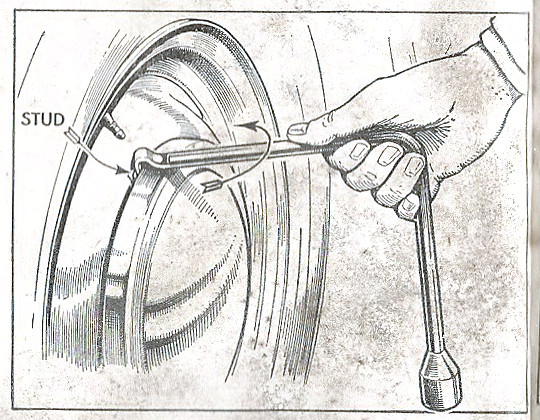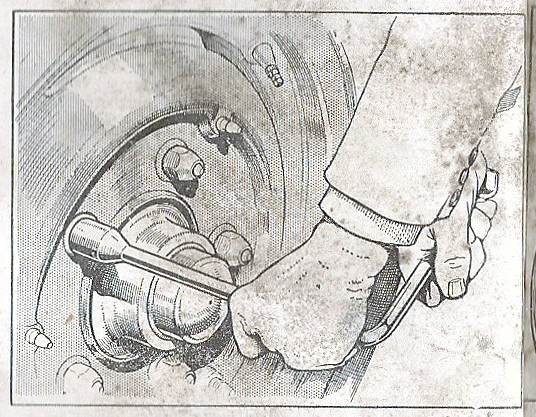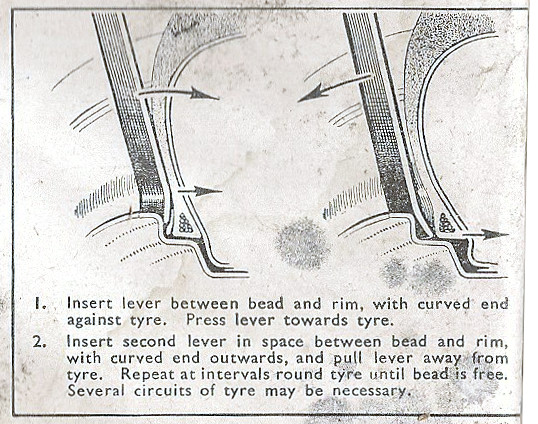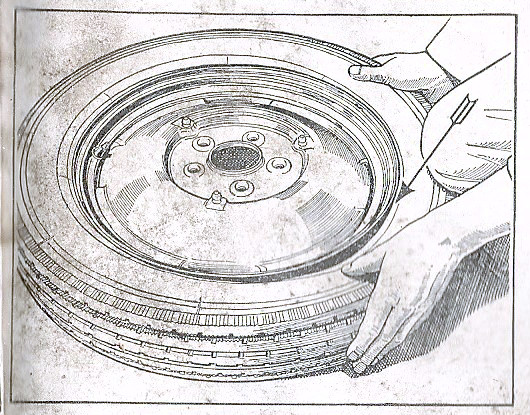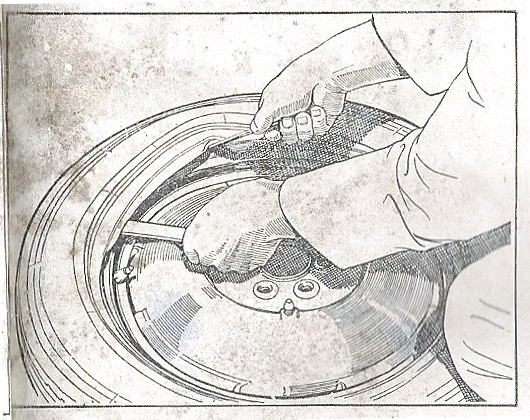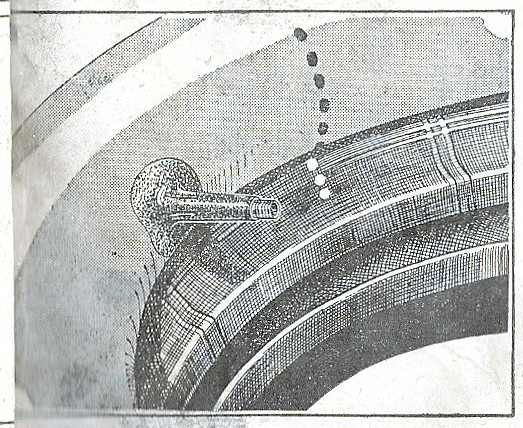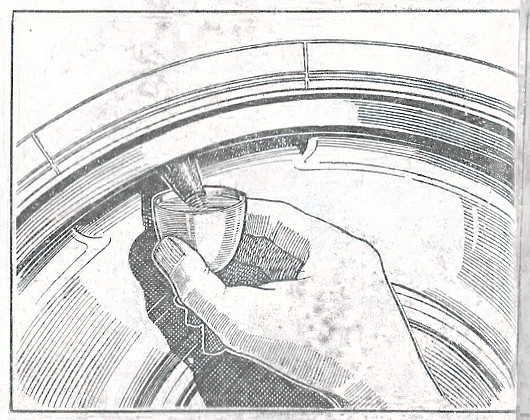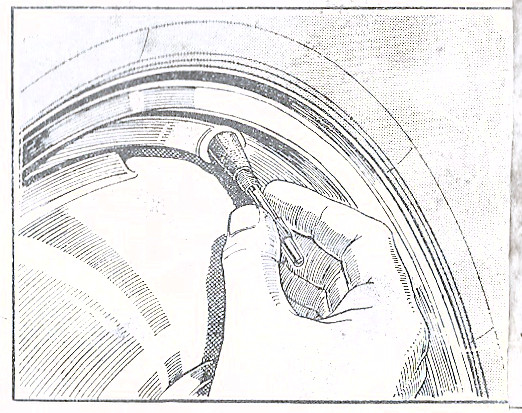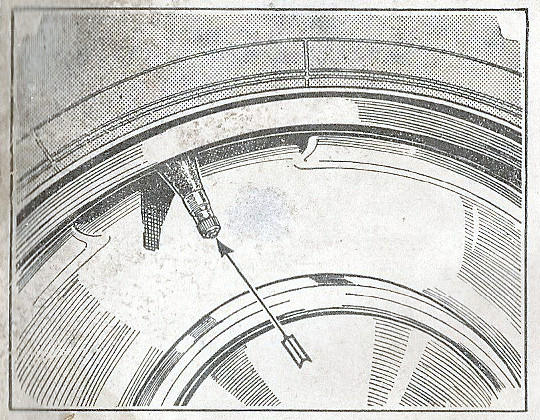UPHOLSTERY AND JACK
Care of Upholstery
Jack Operation
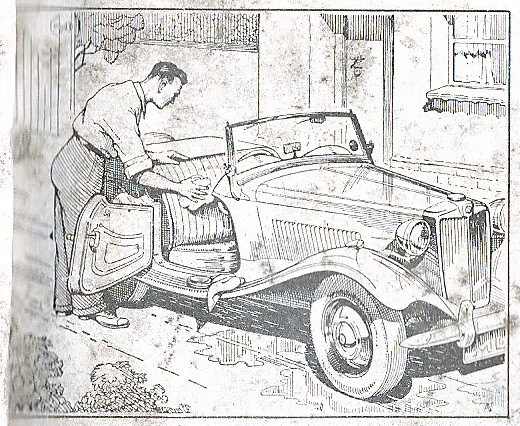
upholstery
The upholstery should be cleaned at regular intervals by wiping it
with a damp cloth and polishing it with a clean soft cloth when it is dry.
The use of polish is quite unnecessary.
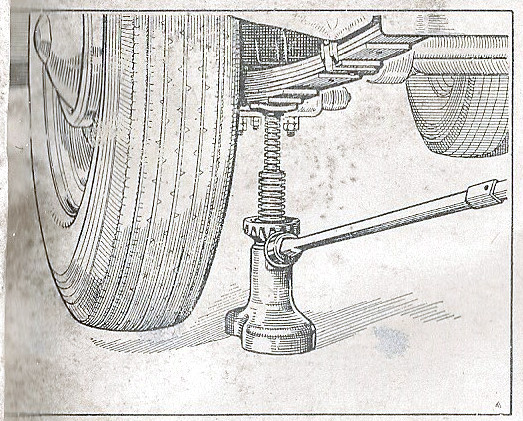
JACKING UP (REAR)
The screw-type jack should be placed under the rear spring, close to the axle, when lifting the rear of the car.
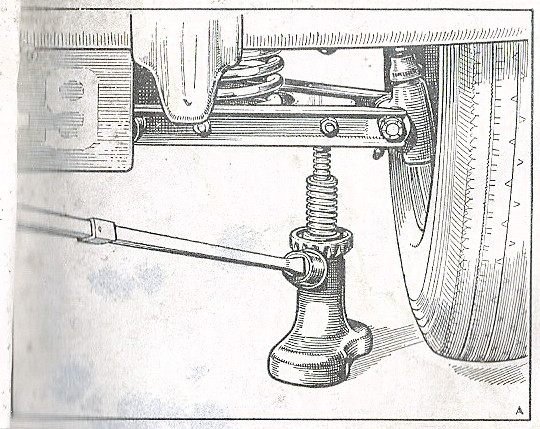
JACKING UP (FRONT)
The screw-type jack should be placed under the lower wishbones, with its pad engaging the depression between the spring seating and the lower link.
29
